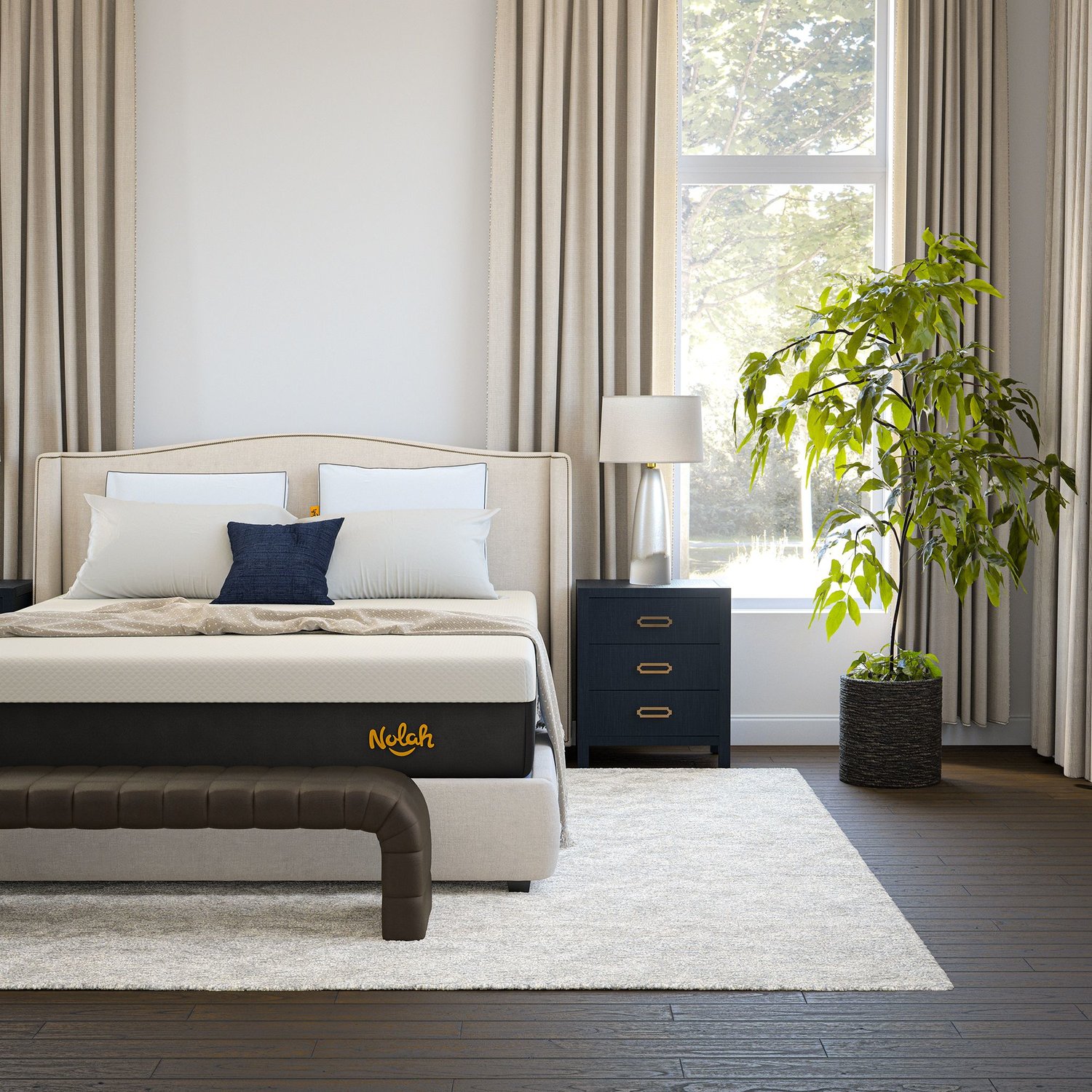
The Best Mattresses for Side Sleepers
Nolah AirFoam™ Mattresses Rank #1 for Side Sleepers
Best Mattress for Side Sleeper Awards
If you naturally gravitate to sleeping on your side, you’re among the majority—an estimated 74 percent of adults sleep in this position. But despite the position’s popularity, very few mattresses are specifically designed for side sleepers. Most mattress brands stick to the “one-for-all” design approach, aiming to make mattresses that suit as many sleepers as possible.
Nolah's founders saw the limitations of this approach. Depending on a person's size and sleep position, they need support in different places and in varying degrees. If you try to make a mattress that fits everyone, it won't truly fit anyone.
Instead of attempting a one-size-fits-all solution, Nolah started by focusing on one key demographic. We designed our first mattress—the Nolah Original—as the perfect side-sleeper mattress.
Along the way, we developed Nolah AirFoam™, our breathable, pressure-relieving, and durable polyfoam that soothes side sleepers’ joints while providing balanced support. We’ve since introduced even newer tech ergonomically designed for side sleepers, like Zoned AirFoam™ and HDMax™ Tri-Zone™ coils for our hybrid models.
Are Nolah Mattresses Only for Side Sleepers?
No! Across our mattress lineup, we have something for sleepers of all sizes and sleep positions.
We designed the Nolah Original with the unique needs of side sleepers in mind, but the Original is a highly versatile mattress. It’s also a good fit for lighter-weight back and combination sleepers. The Signature also uses Nolah AirFoam™, but it has a thicker design, making it a great fit for slightly heavier back and combo sleepers.
Meanwhile, the Evolution AirFoam™ hybrid comes in three firmness levels, accommodating a wide range of sleeper profiles. The latex hybrid Nolah Natural is also very versatile, meeting the needs of all sleep positions, depending on the sleeper’s weight. Lastly, the flippable-firmness Nolah Nurture supports most kids through their formative years.
Not sure which Nolah mattress is right for you? Head over to our Mattress Comparison page for more information.
Finally, a Mattress Made for Side Sleepers
What do we mean when we say Nolah AirFoam™ and our AirFoam™ mattresses are made for side sleepers? They enhance the natural benefits of side sleeping and address the position's vulnerabilities. Our Side Sleeper Guide explores the unique needs of side sleepers in greater depth, but below, we've summarized what you need to know to find a side-sleeper mattress.
What Side Sleepers Need From Their Mattress
Sleeping on your side has natural benefits, like avoiding pressure on your back, preventing snoring, and aiding digestion. However, it also concentrates your body weight across less surface area than back and stomach sleeping. As a result, side sleeping creates pressure points around the shoulder, hip, and knee that contact that mattress.
To offset these vulnerabilities, side sleepers need a bed with the following qualities.
Firmness With Flexibility– Most side sleepers find the right balance of comfort and support on a soft to medium-firm mattress, depending on their weight. This firmness range provides enough resistance to keep the spine aligned but offers enough flexibility to cradle and cushion your joints. To find the exact firmness level that suits your needs, head over to our Mattress Firmness Guide.
Contouring Comfort– To avoid stiffness and soreness, side sleepers need a mattress that contours to their curves—especially around the lower shoulder, hip, and knee. In general, innerspring mattresses don’t provide enough cushioning for side sleepers. They typically prefer all-foam, foam hybrid, latex, or latex hybrid models.
Premium Pressure Relief– Because side sleeping creates pressure points around the shoulder, hip, and knee, side sleepers need a pressure-relieving mattress that redistributes their weight. Pressure-relieving materials like foam and latex help disperse your weight, decreasing the peak pressure around the heavier parts of the body and sensitive joints.
Nolah Mattress Benefits for All Sleepers
Aside from perfecting our products, Nolah also works hard to make the online mattress shopping experience as simple and convenient as possible. All Nolah mattress shoppers, not just side sleepers, can enjoy these policies and benefits.
Mattresses Made to Last– Our mattresses are made to order at our vertically-integrated factory using the finest materials and quality construction.
120-Night Sleep Trial– Eligible Nolah mattress purchases include a 120-night at-home sleep trial. If you don’t love your new bed, you can initiate a hassle-free return or exchange after the first 30 days.
Lifetime Warranty– We've got you covered! Qualifying Nolah mattresses include our lifetime warranty. You can read all the policy details here.
Accident Protection Plans– You can also purchase an accident protection plan with eligible mattresses for further peace of mind. Our Mulberry protection plan covers accidents and wear-and-tear that the standard warranty doesn’t, like stains, rips, and punctures.
Online Support Services– Buying a mattress online doesn’t mean you’re on your own. Our knowledgeable customer support team is available every day and can help you find your perfect-fit mattress.
Disclaimer: Nolah does not provide medical advice. All resources on the Nolah blog, including this article, are informational only and do not replace professional medical counsel. Talk to your doctor about any health, mental health, or sleep-related issues.